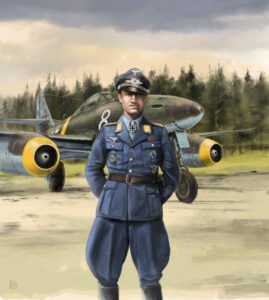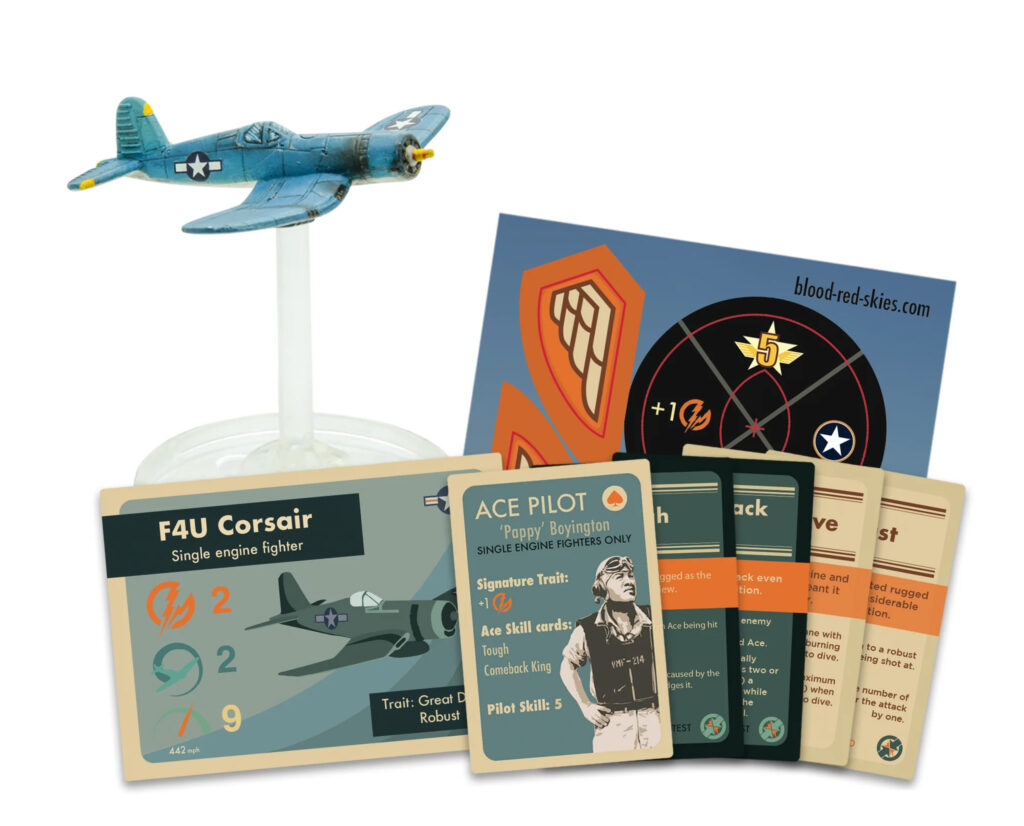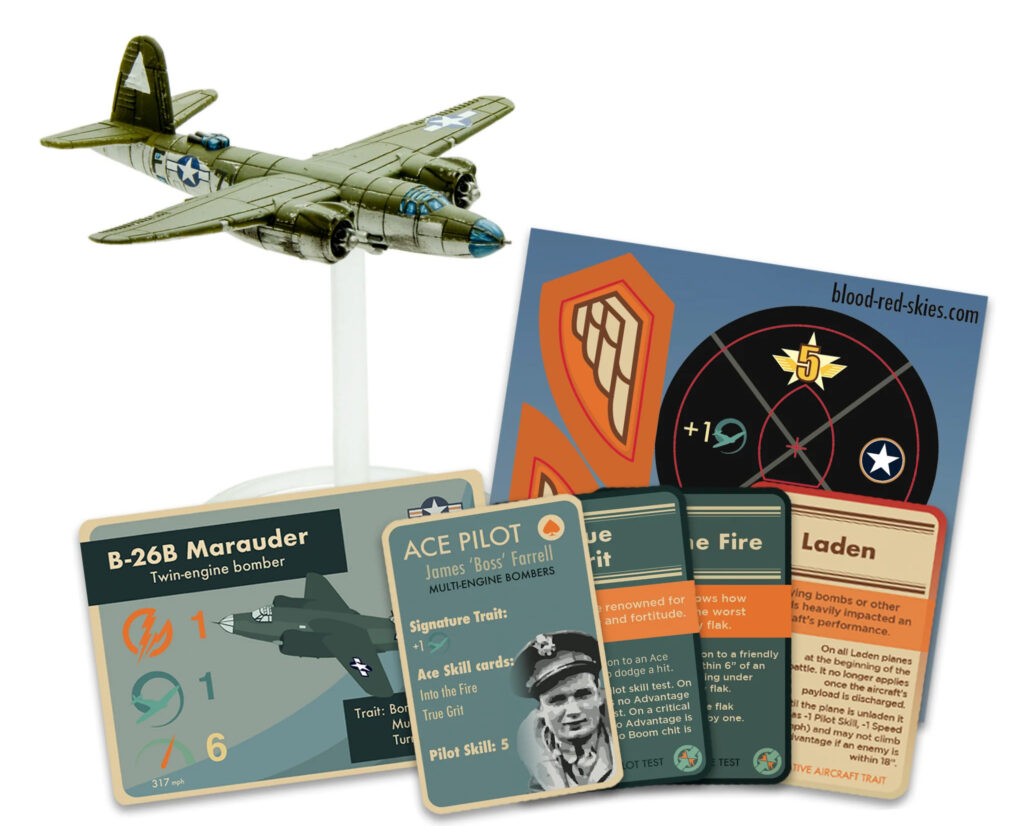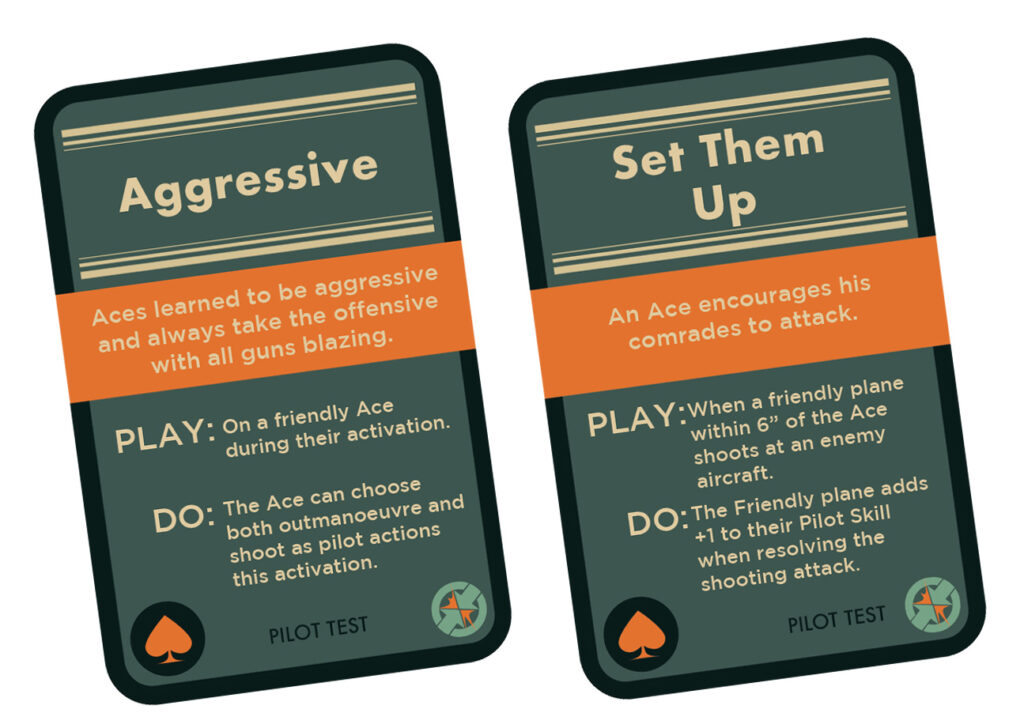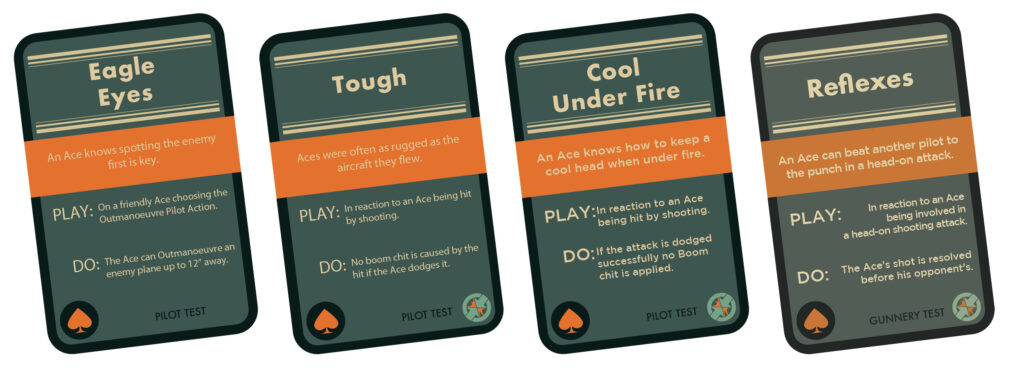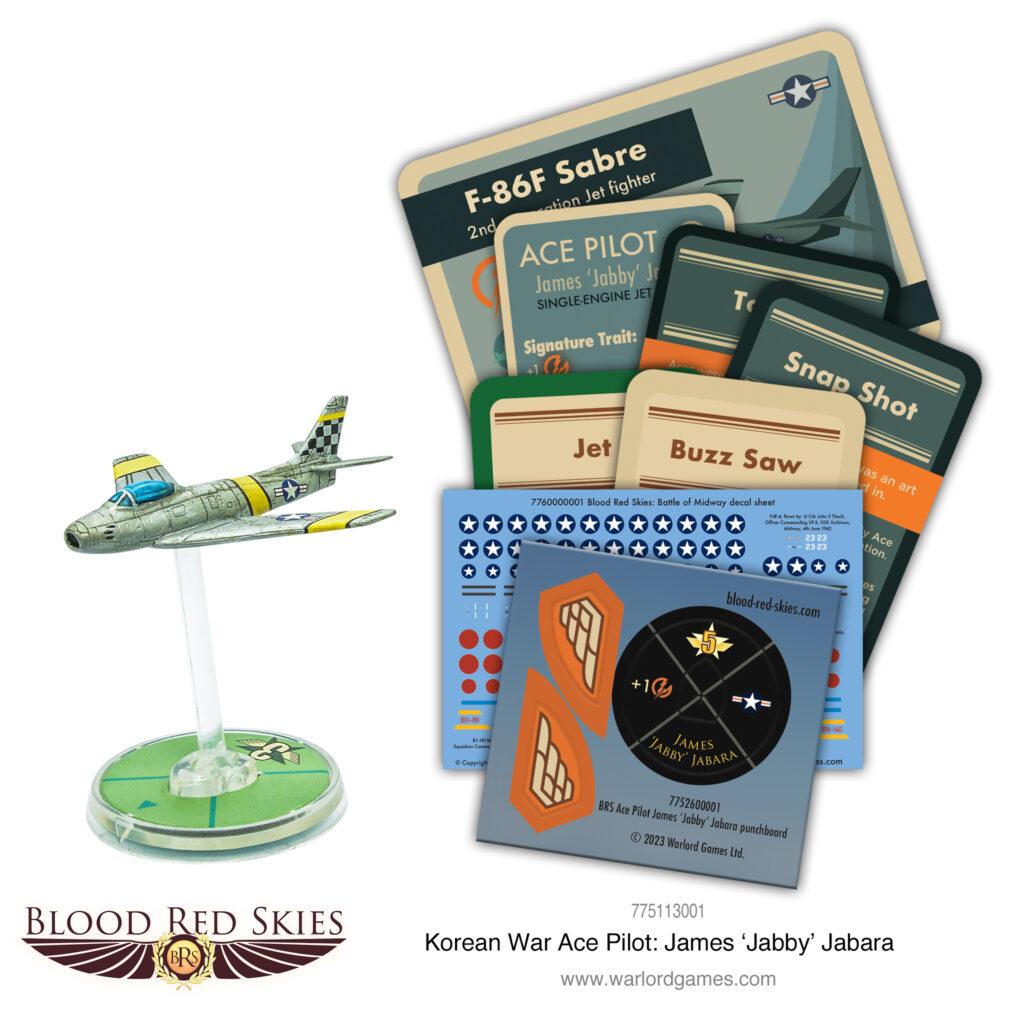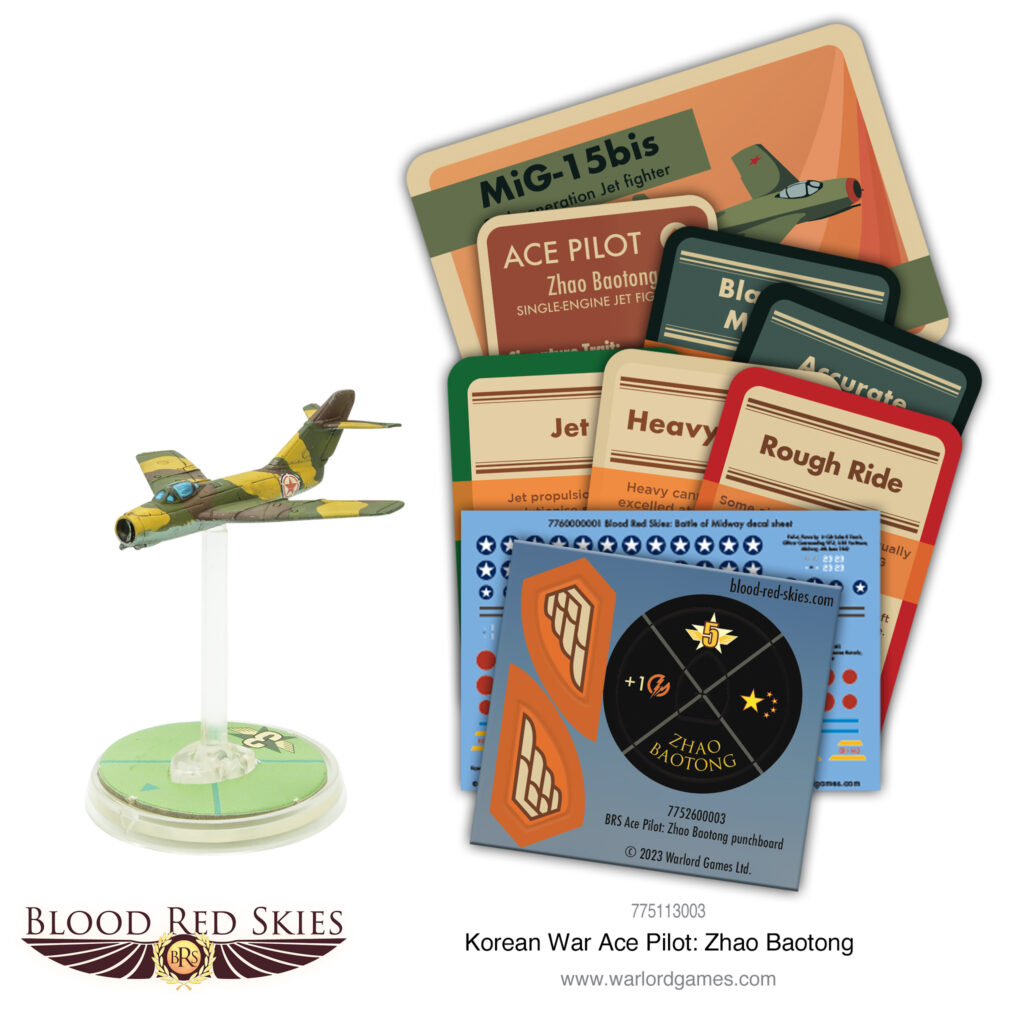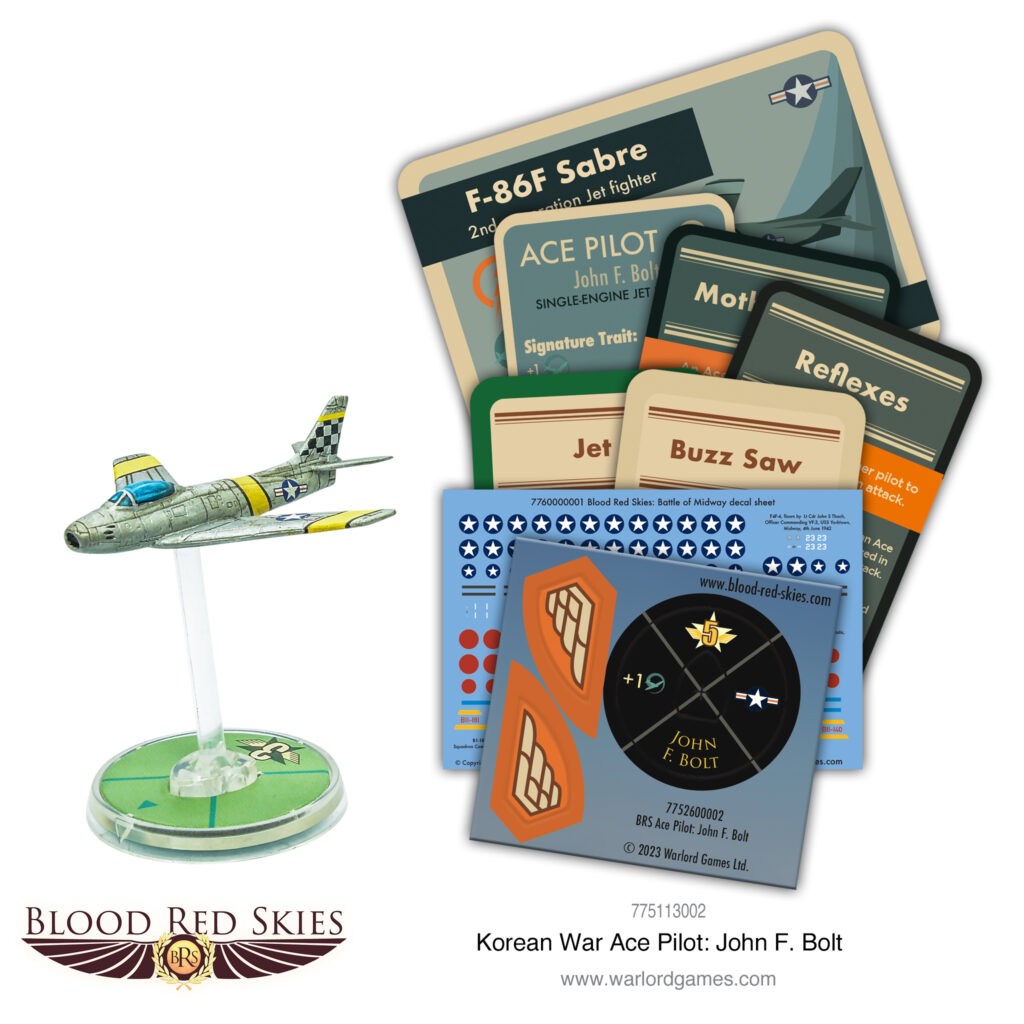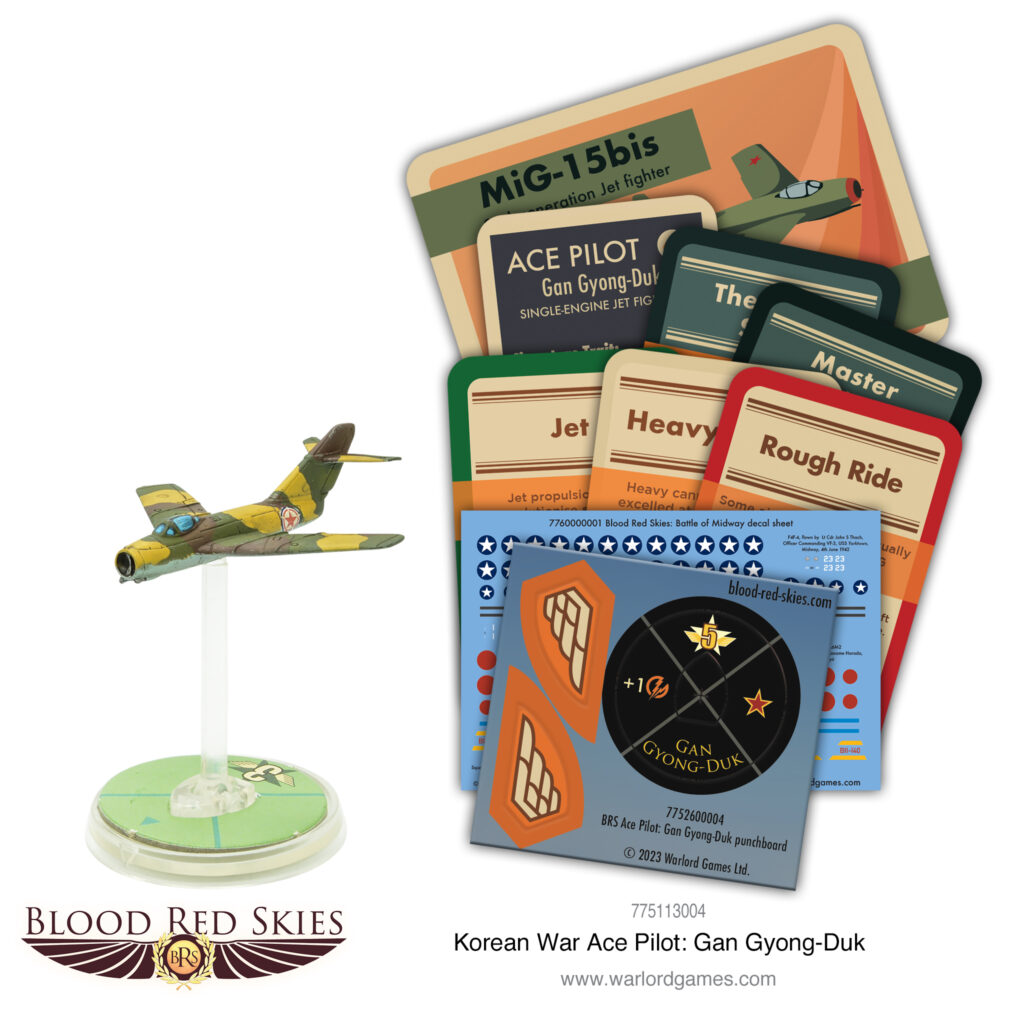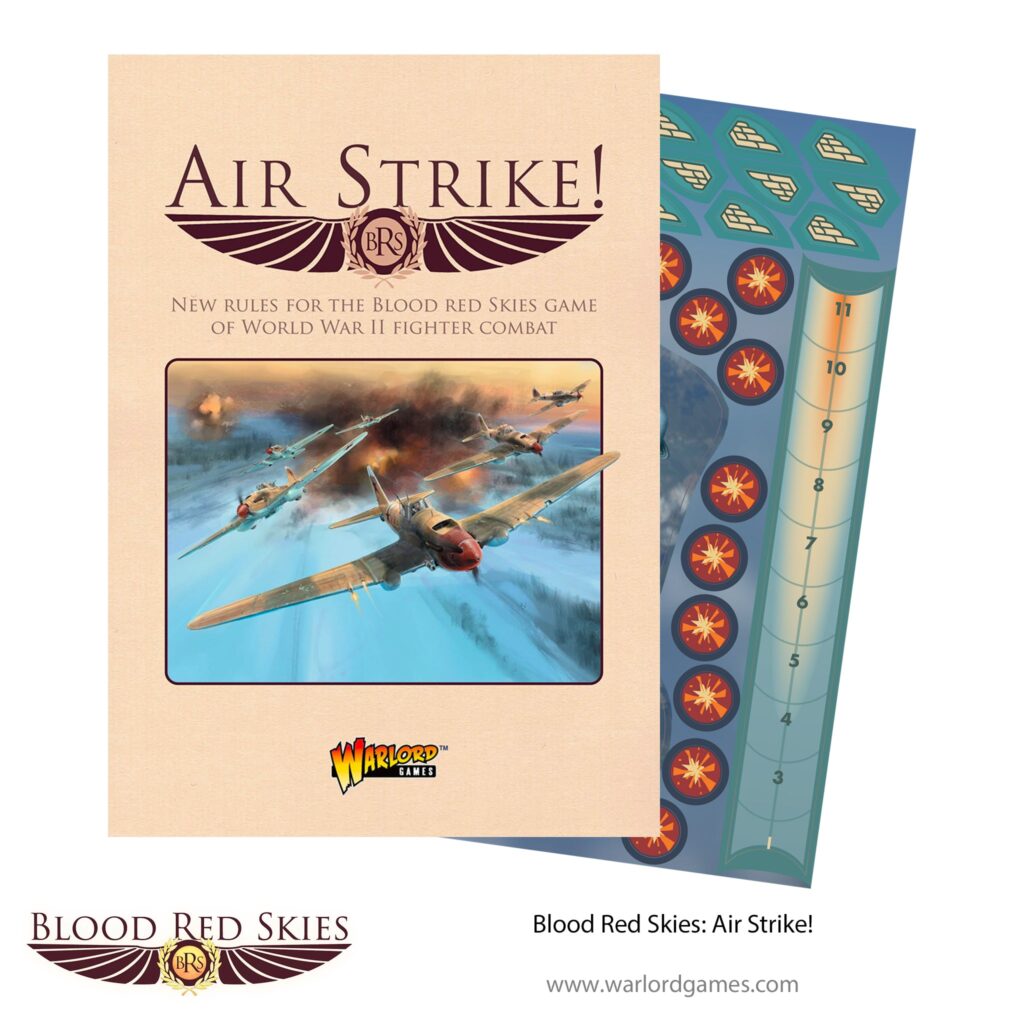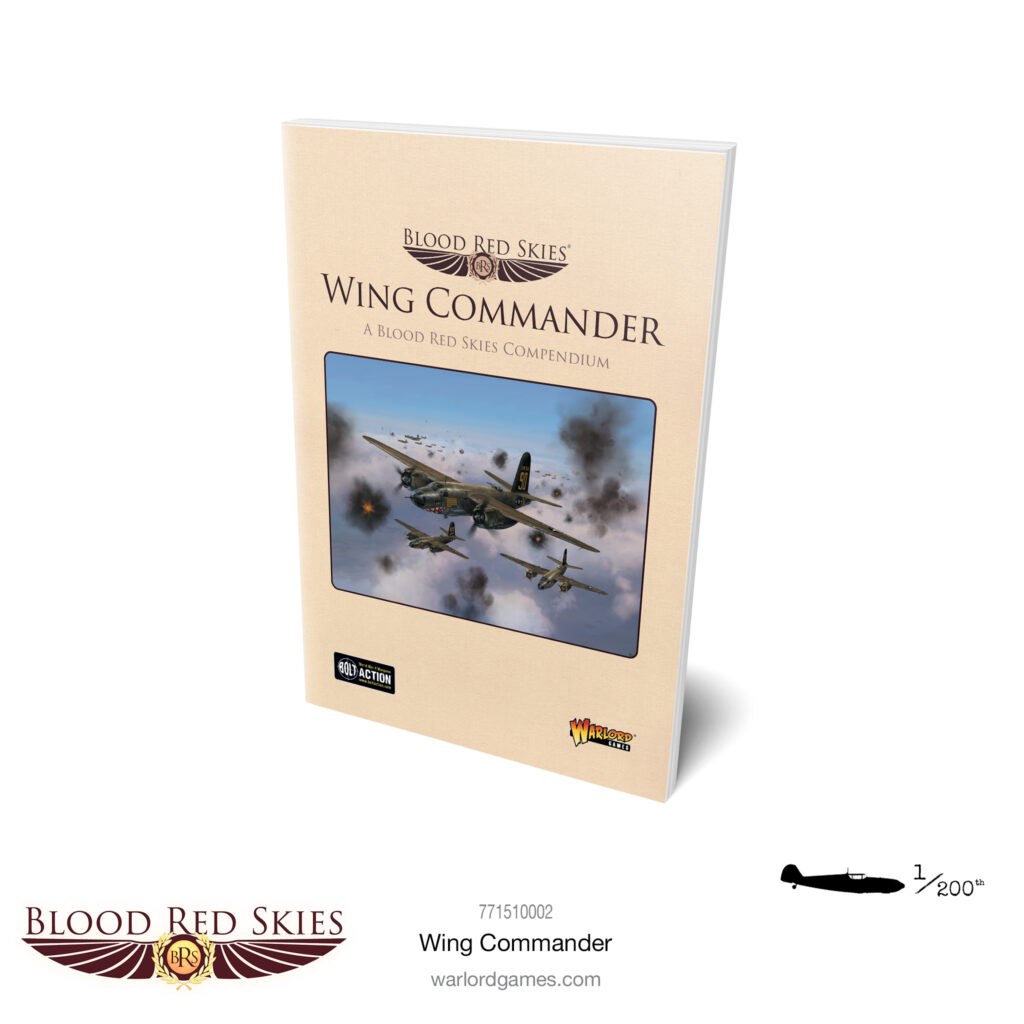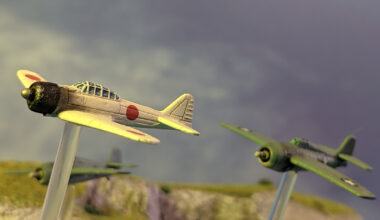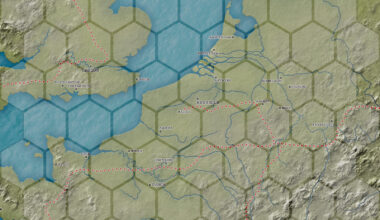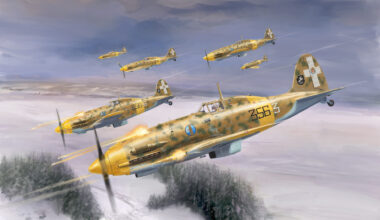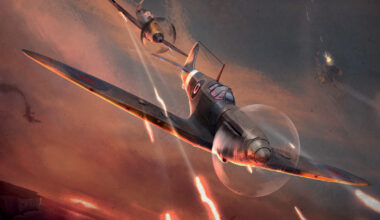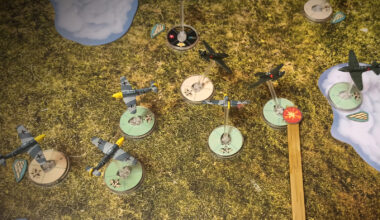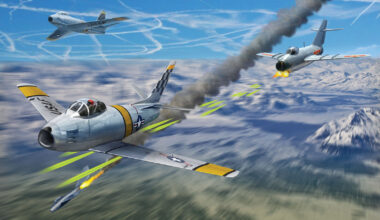This article was written by Douglas Glover, best known as the host of the Lead Pursuit Podcast, which specializes in aerial combat tabletop wargames, with a heavy focus on Blood Red Skies. With over 100 episodes under their belt, they are Blood Red Skies community champions! Give them a listen and find out more on the Lead Pursuit Podcast website »
During the First World War, the concept of the Ace emerged among the aviators fighting on the Western Front. Credit is usually given to the French Press for coining the term “l’As“ (or “The Ace”) for when a pilot had shot down five enemy aircraft. However, each country and air arm had its own requirements for the number of aircraft shot down to achieve any such pilot status; they also used different terms and awards to recognize exceptional pilots and flight crews who had contributed to the war effort. By the Second World War, the status of “Ace” had become more universally agreed on and defined as requiring five confirmed airborne victories over enemy aircraft as a fighter pilot, but the term was occasionally bestowed on pilots and gunners who had the requisite confirmed kills from observation or bomber aircraft.
In Blood Red Skies pilots and crews that have the exceptional skills required to be an Ace are delineated by the highest pilot skill in the game – Pilot Skill 5. This ensures that the Aces will activate first amongst aircraft of similar advantage states, moving and shooting before their opponents can react. There are several variants of Aces in the game, with each filling a specific role in gameplay.
Types of Blood Red Skies Aces
The first variant is the “Named Ace”. These are the Aces available in small boxed sets that feature a single aircraft model and a series of cards. These contain a specific card for a real-life Ace plucked from history, their Ace Skill cards, a card for their most notable aircraft model and any applicable trait cards for that aircraft. These Ace Cards dictate exactly how these pilots can be used in a game of Blood Red Skies, listing the class of aircraft they are restricted to, a Signature Trait that modifies their aircraft’s statistics, and two Ace Skill cards that embody the tactics employed by the Ace. A points value is also assigned to the Ace on the back of their card, based on the combined value of their Signature Trait and Ace Skill cards – usually 125 points or more.
A second variant, and a bit of a sub-set of the “Named Ace” is the “Bomber Ace”, a relatively recent addition to the Blood Red Skies lineup. These Aces are available in exactly the same way as described above, but really their abilities represent the capabilities and skills of an entire crew rather than just a single, lone fighter pilot. They also possess Signature Traits and have Ace Skill cards assigned, but their point values are less than that of “Named Aces” due to their utility in very specific air-to-surface situations.

The third and most commonly seen variant is the generic “Ace”. These Aces do not have a specific Ace Card, no Signature Trait, and only have one Ace Skill, which is chosen by the player. As a result these Aces always cost you 100 points to add to an aircraft. If you add more than one Ace to your force you have to remember which pilot is using which Ace Skill Card, as they can only use the skill they are assigned at the start of the game, regardless of whether you are playing with an Open or a Closed Action deck.
You can add Aces to your game in several ways. In a friendly match-up, whether you are playing a scenario from the Battle of Midway starter set, the Air Strike! expansion, or the upcoming Wing Commander compendium, you can always opt to use any one of the three Ace variants by paying the appropriate point values and adding them to an aircraft in your force like any other Pilot Skill choice. Of course, if you chose a Named Ace or Bomber Ace, you can only add one of that specific ace to your force – for obvious reasons. While they may have been amazing pilots and crews, they couldn’t be in multiple places at once! If you are playing a tournament game, you should check the tournament organizer’s rules packet to see if they have placed any restrictions on when and how you can add Aces to your squadron list.
Ace Tactical Employment
When you make it into the aerial engagement, there are several ways to employ the fighter Aces in your force. Two of the most common are referred to as “Ace Forward” and “Ace Sweeper”.
When utilizing the Ace Forward tactic, you will look to capitalize on the Ace’s Pilot Skill of 5 to allow them to activate before other aircraft at a similar advantage state, and to automatically Outmanoeuvre nearly every other pilot in the air. Your Ace should be positioned at the front of one of your elements and (hopefully) at an Advantaged state. As you work your Ace towards an enemy element, you should be able to get the Ace within 9” of an enemy aircraft and ideally use the Outmaneuver Pilot Action to knock them from their position of Advantage. From that point on, it is up to the Ace’s wingmen to close in and engage the enemy aircraft, while still covering the Ace’s 6-o’clock with the Wingman Effect.
One of the most powerful Ace Skills to use with the Ace Forward tactic is Aggressive. This Ace Skill card gives your ace the ability to both Outmaneuver and Shoot in the same Pilot Action. Imagine how quickly your Ace can set up their wingmen for follow-on shots against an enemy at a Disadvantaged state using this combination! Set Them Up also works as an Ace Skill for this tactic, as the follow-on attacks from your wingmen within 6” of the Ace will be at +1 Pilot Skill.
The Ace Sweeper tactic works in a different manner, and usually with elements of three or more aircraft. In this case, your Ace deploys behind a pair (or more) of your fighters and “leap-frogs” ahead during their activation, with their element members providing cover via the wingman effect until they themselves activate and move. Don’t worry about the enemy aircraft at a Neutral state Burning Advantage to Manoeuvre and turning directly behind you – remember that they will be Disadvantaged and thus cannot execute Tailing on your aircraft, but they can still use the Outmanoeuvre Pilot Action to influence the fight.
Several previously mentioned Ace Skills pair well with the Ace Sweeper tactic, but especially Eagle Eyes, which extends your Ace’s Outmanoeuvre range to 12”. Utilizing the Ace Sweeper tactic also opens up your Ace Skills to ones that are more defensive like Tough or Cool Under Fire. Of course one of the sneakiest ones to play in this tactic is Reflexes, so that when your Ace closes in for the kill, the results of their head-on shot take effect before their opponent can shoot back!
Tournament Aces
How do Aces fit into the tournament scene? With the standard Tournament list value being 500 points, very few Named Aces make an appearance, as the points budget rarely justifies the extra expense for a Signature Trait and extra Ace Skill. However, a lot of players add an Ace to their list, either to work in synergy with their deployed element as described in the tactics above, or with an Ace-heavy list. If your aircraft’s points cost is 25 or less, you can even run the minimum tournament scenario list size of four aircraft, all with Aces! Don’t forget what we mentioned above about Ace Skills cards being tied to specific Aces, as nothing is more frustrating than not having the card you need active in your hand when its Ace activates.
Regardless of if you play tournament match-ups, friendly pick-up games, or historically-based narrative games, the Aces in Blood Red Skies provide a lot of enjoyment and add tactical depth to the game. But be warned, they are not invincible. More than once the Lead Pursuit Podcast team has seen an Ace fall to a lowly Pilot Skill 2 Rookie based on well-executed tactics and the fickle luck of the dice!
With the recent introduction of four new Korean War Aces, Blood Red Skies now has Ace pilots for you to choose from that cover every era and air arm currently available for the game. Pick up an Ace or two and see how they can have a profound impact upon a tabletop dogfight!
~ by Douglas Glover
The Blood Red Skies Library
You’ll find the full rules for adding Ace Pilots to your squadrons in the Air Strike! compendium, along with loads of other guidance for putting together squadrons and tournament play and rules for expanded air operations. For the most complete Blood Red Skies experience, with a full errata, FAQ and comprehensive aircraft lists look to the brand-new compendium, Wing Commander!

